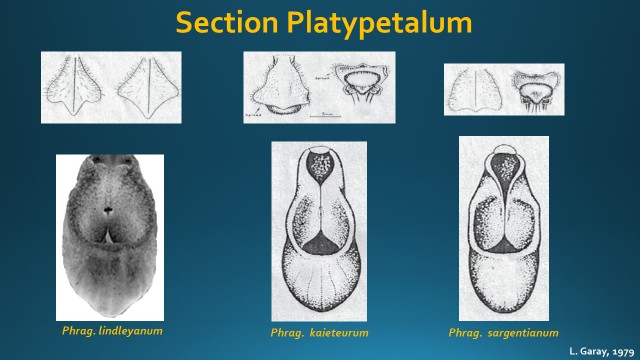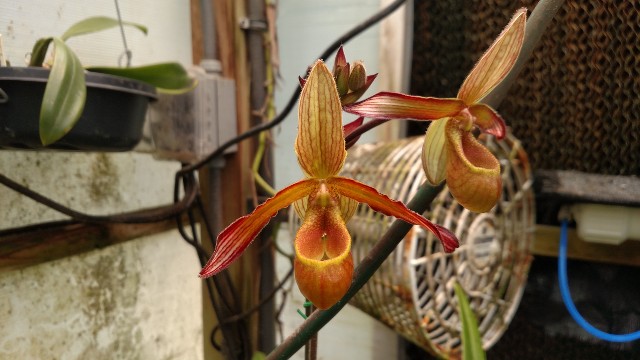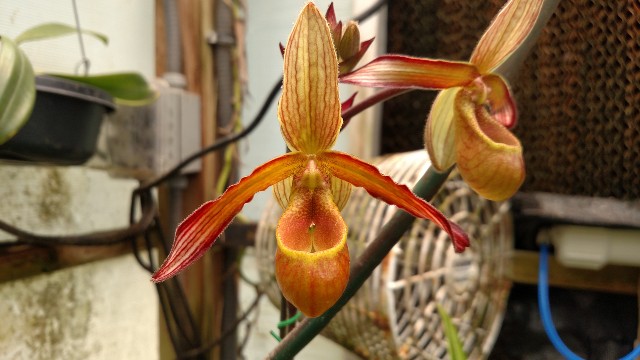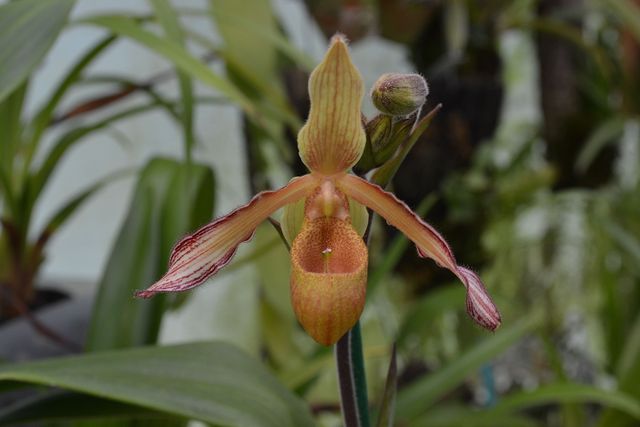naoki
Well-Known Member
Eron (eaborne) posted a very cool P. sargentianum 'Really Red' a couple years ago (link to the thread). JC flasked selfed seeds of this plant, and distributed them in spring 2015. Here are the first two plants which flowered.
It is very interesting that they are not red like Eron's. We'll see how others will look like maybe next year. Also if you compare the pouch shape, the first and second plant look a bit different. If you look at the area below the pouch opening, the second plant has much narrower "waist". It is somewhat similar to the difference in the lip shapes between P. caudatum vs P. humboldtii.
I was reading Cribb and Purver's Slipper Orchids of the Tropical Amaericas, and they mention that one of the differences between P. sargentianum and P. lindleyanum is that the shape of dorsal sepal; elliptic in P. lindleyanum and lanceolate in P. sargentianum. Apparently, these two plants have elliptic dorsal sepals. Interesting...
I'm guessing a couple other people here are growing this cross. It would be cool to see the photos of other offspring.
Plant 1 (the fastest grower)
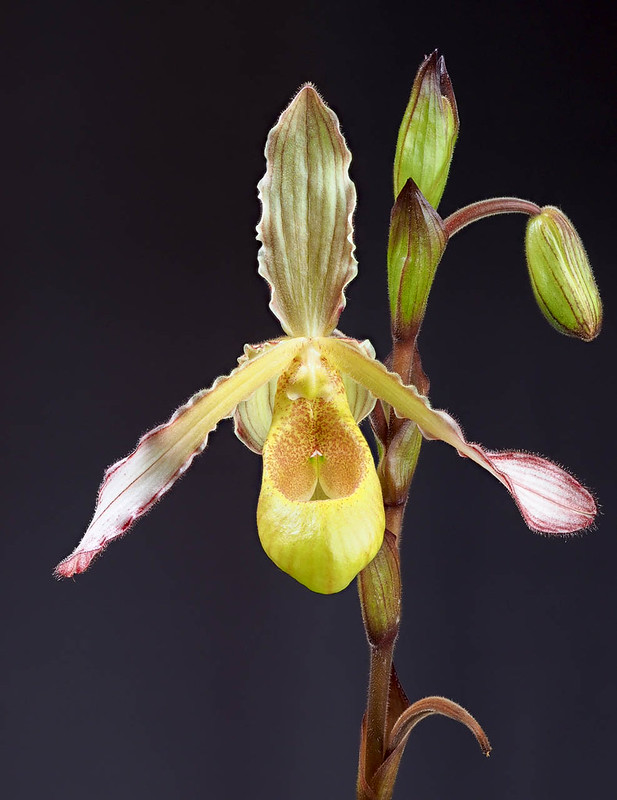
Phragmipedium sargentianum 'Really Red' x self on Flickr
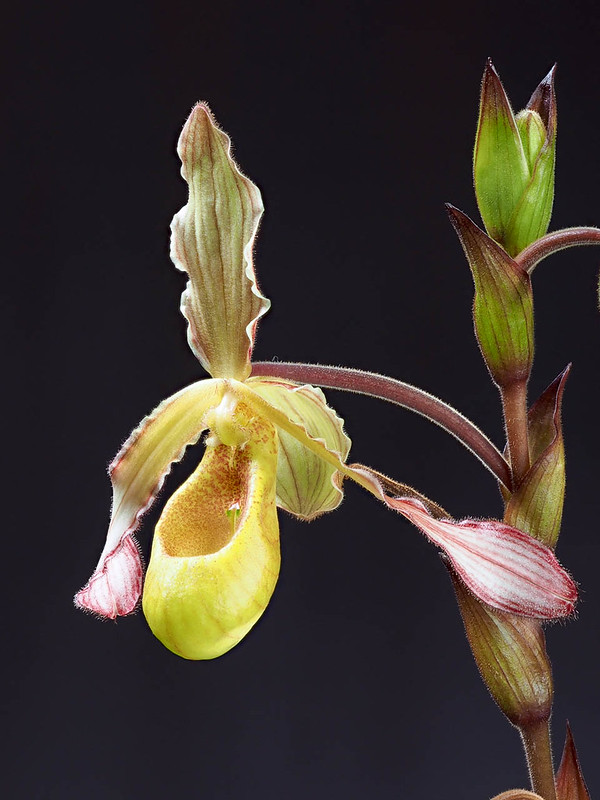
Phragmipedium sargentianum 'Really Red' x self on Flickr
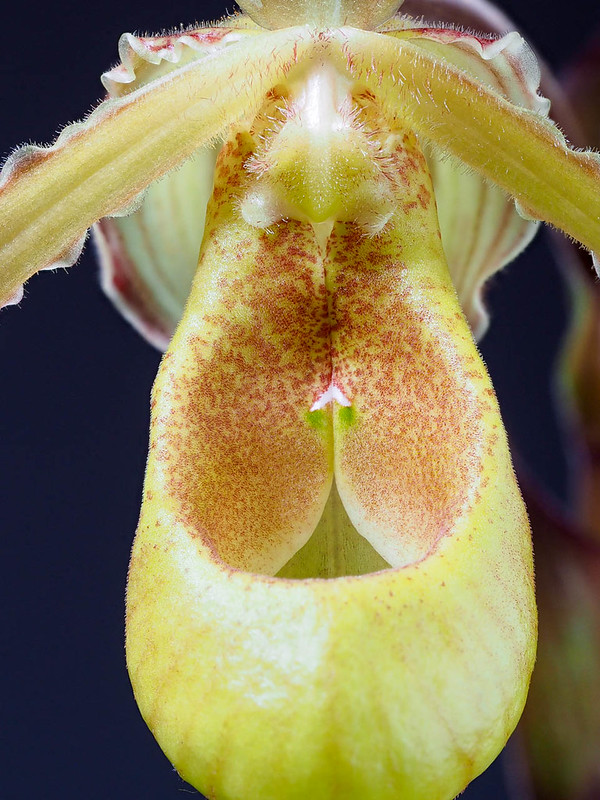
Phragmipedium sargentianum 'Really Red' x self on Flickr
plant 2:
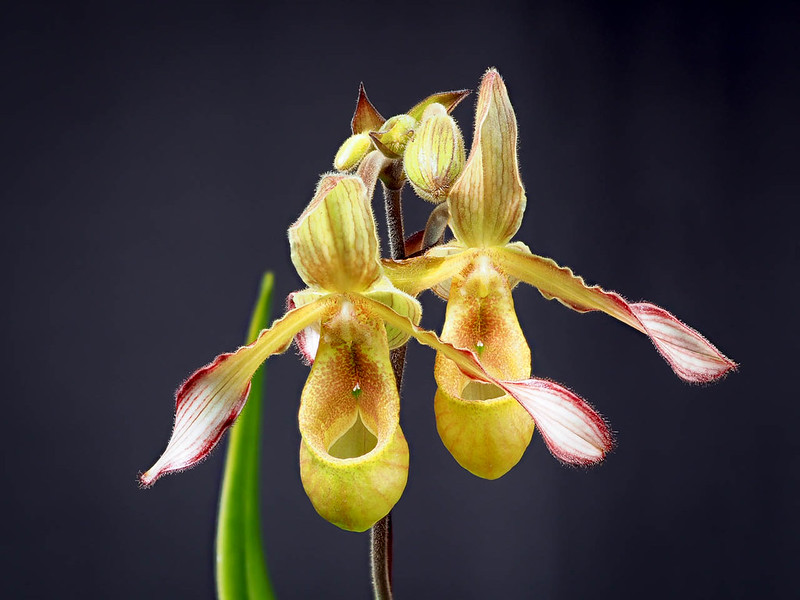
Phragmipedium sargentianum 'Really Red' x self on Flickr
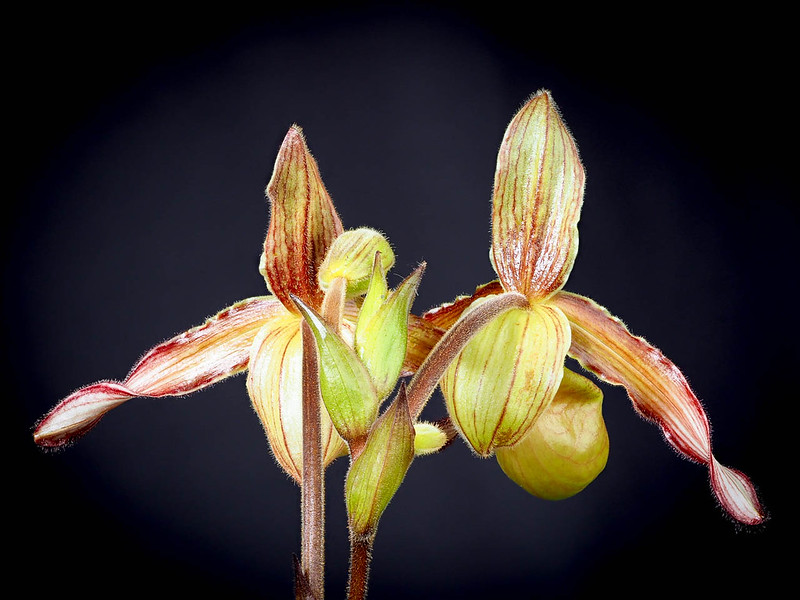
Phragmipedium sargentianum 'Really Red' x self on Flickr
1st plant (right) and 2nd plant (left). The leaves are quite damaged; the battle scars from some chemical treatments against bush snails. Even though the plants look like craps, they are doing well now. I think the first plant has 3 growths.
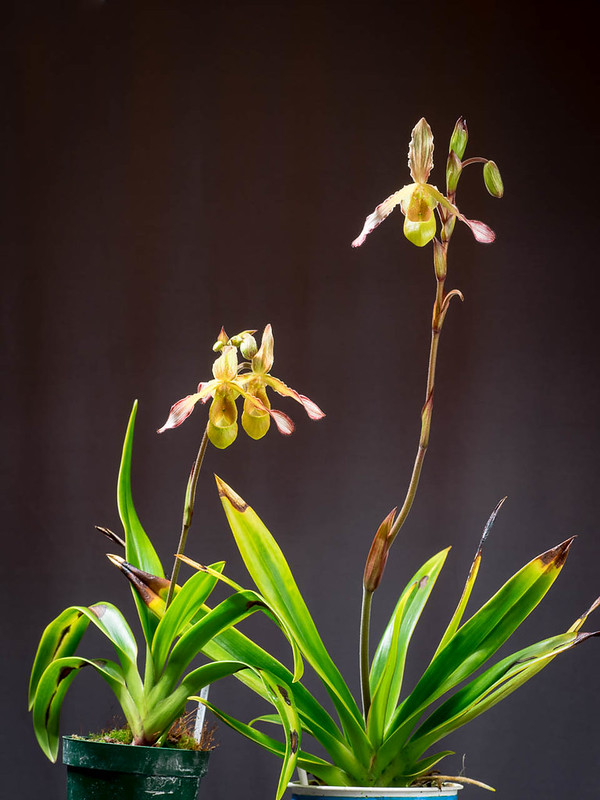
Phragmipedium sargentianum 'Really Red' x self on Flickr
It is very interesting that they are not red like Eron's. We'll see how others will look like maybe next year. Also if you compare the pouch shape, the first and second plant look a bit different. If you look at the area below the pouch opening, the second plant has much narrower "waist". It is somewhat similar to the difference in the lip shapes between P. caudatum vs P. humboldtii.
I was reading Cribb and Purver's Slipper Orchids of the Tropical Amaericas, and they mention that one of the differences between P. sargentianum and P. lindleyanum is that the shape of dorsal sepal; elliptic in P. lindleyanum and lanceolate in P. sargentianum. Apparently, these two plants have elliptic dorsal sepals. Interesting...
I'm guessing a couple other people here are growing this cross. It would be cool to see the photos of other offspring.
Plant 1 (the fastest grower)

Phragmipedium sargentianum 'Really Red' x self on Flickr

Phragmipedium sargentianum 'Really Red' x self on Flickr

Phragmipedium sargentianum 'Really Red' x self on Flickr
plant 2:

Phragmipedium sargentianum 'Really Red' x self on Flickr

Phragmipedium sargentianum 'Really Red' x self on Flickr
1st plant (right) and 2nd plant (left). The leaves are quite damaged; the battle scars from some chemical treatments against bush snails. Even though the plants look like craps, they are doing well now. I think the first plant has 3 growths.

Phragmipedium sargentianum 'Really Red' x self on Flickr




